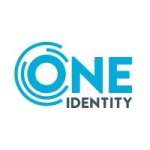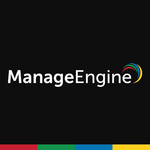What is our primary use case?
Commonly, we engage in three key use cases. The first involves upgrading customer’s outdated directories like 2008 or 2012 to newer versions for improved structure. The second revolves around creating a hybrid setup with Office or Azure cloud, aiming for single sign-on across both. Lastly, we often tackle restructuring situations due to mergers or acquisitions, where directory structures must be unified into a shared infrastructure. These are the typical scenarios we handle in our projects.
What is most valuable?
One noteworthy aspect we discovered is the ability to exercise tight control over systems, specifically Windows PCs. This pertains to the management of policies, usage patterns, and user access on these devices, particularly within the framework of Active Directory which is extremely well thought. This actually works better with on-premises solutions. However, as the global trend shifts towards cloud and hybrid environments, Active Directory and its use is diminishing. Yet, it hasn't entirely lost its relevance and remains a presence that cannot be entirely disregarded.
What needs improvement?
Typically, it depends on the customer's situation. If the customer operates in smaller locations where most PCs are in a common location, we usually aim to consolidate the directory infrastructure for easier maintenance. However, for distributed setups spanning multiple countries, configuring multiple sites becomes necessary and more intricate to handle. Our objective is to minimize the number of sites, simplifying operations for IT administrators and reducing errors. Mistakes in Active Directory can be costly for organizations, as disruptions can occur rapidly.
Moreover, when it comes to hybrid single sign-on across various applications, Microsoft hasn't put forth significant effort. Single sign-on has become a challenge for many customers who utilize diverse solutions beyond Microsoft products. While implementing single sign-on is relatively straightforward in the Azure cloud, it's considerably more complex when dealing with the local Active Directory. This presents a big challenge for many of our customers.
For how long have I used the solution?
I have been working with Microsoft since 2000 and was a part of the Microsoft Active Directory Development team in Windows.
What do I think about the stability of the solution?
The stability and effectiveness of the setup depends on its design consideration of future growth. For instance, if a company starts with a thousand PCs but foresees expansion to ten or fifteen thousand PCs over five years, the solution should involve adding servers rather than restructuring the entire network. Unfortunately, we often find that this foresight is lacking in many cases. The initial design should be though-through with growth in mind to ensure scalability and stability.
What do I think about the scalability of the solution?
Active Directory was an extension of the Windows NT infrastructure and wasn't designed for extreme scalability. It was intended for organizations with around five to six thousand PCs.
However, as organizations grew to more than twenty-five or thirty thousand PCs, the complexity of managing it increased significantly. Especially when managing across different countries or regions, the complexity could lead to errors, issues with patches, and other problems. For large organizations, we often suggest a hybrid solution involving Azure Directory. This way, local Active Directory is still present, but there's less dependency on it and more reliance on the cloud. Cloud solutions like Azure offer virtually limitless scalability compared to local setups constrained by server and network infrastructure.
How are customer service and support?
We have a technical support team in place. In most Active Directory cases, the customers have external support from vendors. In that case, our observation is that if the initial setup is executed well and the system operates smoothly, there are fewer and simple user issues. The maintenance tasks remain minimal.
In the case of Microsoft vendor support, we have extremely poor support quality in our interactions with numerous customers. The received support has been lacking in effectiveness, largely due to the practice of assigning relatively inexperienced individuals who are learning as they go. Dealing with such a complex infrastructure as an active directory, experimenting can worsen the situation.
How would you rate customer service and support?
Which solution did I use previously and why did I switch?
Certainly, we have worked with Novell's Directory Infrastructure, which initially outperformed Microsoft's Active Directory. However, Microsoft rapidly closed the gap and swiftly gained prominence, and became one of the directories that could manage PCs
NetWare emerged as an easy-to-deploy and manage solution with good stability. The Windows NT infrastructure or Active Directory required many servers or just one server. The NT domain was less stable and based on a single server which had a lot of issues and could bring down the entire network. However, Microsoft addressed this concern in subsequent versions, effectively eliminating the problem.
How was the initial setup?
When dealing with a new directory structure, the process is generally straightforward and clear. The approach depends on the organization's desired business rules. In cases of restructuring, the level of complexity varies based on the type of restructuring, whether it involves straightforward consolidation or the amalgamation of two distinct organizations. Rather than rating, the most complex scenario arises during the restructuring of directories, particularly when merging two companies or distinct structures. The complexity arises from the case to simplify and bring the rules on the same ground from each entity into a unified set suitable for the new organization. In my view, these projects have posed one of the most difficult cases.
For a fresh setup, the server infrastructure typically requires a few days or even less. The server setup is generally straightforward, but the time-consuming part lies in manually joining the PCs to the domain, as there isn't a fully automated method for it.
What's my experience with pricing, setup cost, and licensing?
Active Directory is an expensive solution, primarily due to Microsoft's licensing model. This licensing approach includes paying for server licenses as well as for each computer that connects to it. However, when working with the Azure cloud, there is no cost for the server. This is profitable and one of the main reasons why Azure Cloud and other cloud-based solutions are being used more.
What other advice do I have?
There are certain scenarios where an Azure or cloud-based system might be unsuitable. For example, industries like power plants or government agencies might have restricted cloud connectivity due to regulatory or security concerns. In such cases, the utilization of Active Directory becomes the choice for managing on-premises infrastructure, as cloud isn't feasible option.
I would rate the overall solution an eight out of ten.
Disclosure: My company has a business relationship with this vendor other than being a customer. partner























